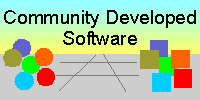8. Given a large enough beta-tester and co-developer base, almost every problem will be characterized quickly and the fix obvious to someone.
Or, less formally, ``Given enough eyeballs, all bugs are shallow.'' I dub this: ``Linus's Law''.
My original formulation was that every problem ``will be transparent to somebody''. Linus demurred that the person who understands and fixes the problem is not necessarily or even usually the person who first characterizes it. ``Somebody finds the problem,'' he says, ``and somebody else understands it. And I'll go on record as saying that finding it is the bigger challenge.'' But the point is that both things tend to happen quickly.
Here, I think, is the core difference underlying the cathedral-builder and bazaar styles. In the cathedral-builder view of programming, bugs and development problems are tricky, insidious, deep phenomena. It takes months of scrutiny by dedicated few to develop confidence that you've winkled them all out. Thus the long release intervals, and the inevitable disappointment when long-awaited releases are not perfect.
In the bazaar view, on the other hand, you assume that bugs are generally shallow phenomena -- or, at least, that they turn shallow pretty quick when exposed to a thousand eager co-developers pounding on every single new release. Accordingly you release often in order to get more corrections, and as a beneficial side effect you have less to lose if an occasional botch gets out the door.
And that's it. That's enough. If ``Linus's Law'' is false, then any system as complex as the Linux kernel, being hacked over by as many hands as the Linux kernel, should at some point have collapsed under the weight of unforseen bad interactions and undiscovered ``deep'' bugs. If it's true, on the other hand, it is sufficient to explain Linux's relative lack of bugginess.
And maybe it shouldn't have been such a surprise, at that. Sociologists years ago discovered that the averaged opinion of a mass of equally expert (or equally ignorant) observers is quite a bit more reliable a predictor than that of a single randomly chosen one of the observers. They called this the ``Delphi effect''. It appears that what Linus has shown is that this applies even to debugging an operating system -- that the Delphi effect can tame development complexity even at the complexity level of an OS kernel.
I am indebted to Jeff Dutky <dutky@wam.umd.edu> for pointing out that Linus's Law can be rephrased as ``Debugging is parallelizable''. Jeff observes that although debugging requires debuggers to communicate with some coordinating developer, it doesn't require significant coordination between debuggers. Thus it doesn't fall prey to the same quadratic complexity and management costs that make adding developers problematic.
In practice, the theoretical loss of efficiency due to duplication of work by debuggers almost never seems to be an issue in the Linux world. One effect of a ``release early and often policy'' is to minimize such duplication by propagating fed-back fixes quickly.
Brooks even made an off-hand observation related to Jeff's: ``The total cost of maintaining a widely used program is typically 40 percent or more of the cost of developing it. Surprisingly this cost is strongly affected by the number of users. More users find more bugs.'' (my emphasis).
More users find more bugs because adding more users adds more different ways of stressing the program. This effect is amplified when the users are co-developers. Each one approaches the task of bug characterization with a slightly different perceptual set and analytical toolkit, a different angle on the problem. The ``Delphi effect'' seems to work precisely because of this variation. In the specific context of debugging, the variation also tends to reduce duplication of effort.
So adding more beta-testers may not reduce the complexity of the current ``deepest'' bug from the developer's P.O.V., but it increases the probability that someone's toolkit will be matched to the problem in such a way that the bug is shallow to that person.
Linus coppers his bets, too. In case there are serious bugs, Linux kernel version are numbered in such a way that potential users can make a choice either to run the last version designated ``stable'' or to ride the cutting edge and risk bugs in order to get new features. This tactic is not yet formally imitated by most Linux hackers, but perhaps it should be; the fact that either choice are available makes both more attractive.
|
 Mib Software
Mib Software
